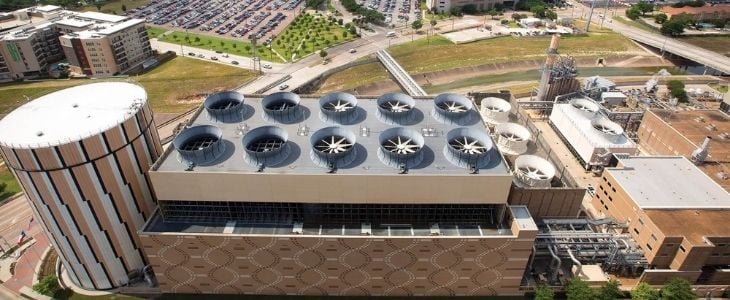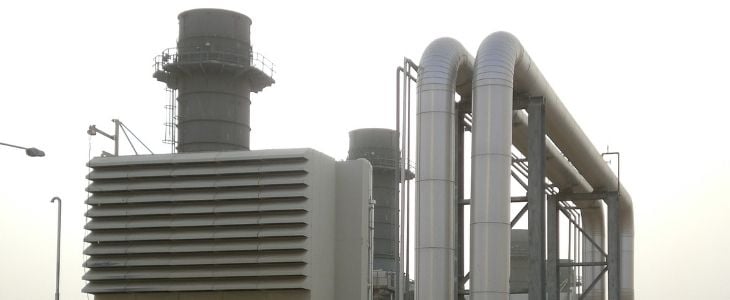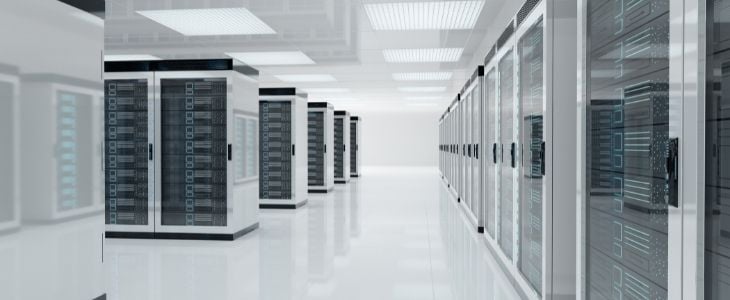Industrial refrigeration isn’t air conditioning—it goes beyond that, both in scale and in the little details. Industrial refrigeration can be defined as the equipment and accessories projected to remove heat from large-scale processes or materials, lowering the temperature to a desired value. Depending on different parameters like the production scale, temperature difference, accuracy or expected temperature, there are multiple methods used to apply industrial refrigeration. Industrial refrigeration has been of paramount importance since the early years of the twentieth century. Historically, industries like Food and Beverages, Pharmaceuticals or Petrochemicals, achieved important developments thanks to systems indicated for reducing the temperature of their products or processes, or conserving them in optimal conditions to avoid safety issues. In industries where bioprocesses are involved, products and processes have to be developed and stored in ideal conditions to achieve the maximum yield in reactions, or to avoid the decay of products. Sometimes refrigeration is necessary to maintain safe conditions in the process or product to avoid accidents or chain reactions, e.g. in compounds with a low boiling point. In addition, cooling may be applied to have an adequate environment for people or machines to work, like in industries where high amounts of heat are produced or for equipment that needs to dissipate the heat generated.
Keep reading: Industrial refrigeration maintenance: Best Performance
Applications of Refrigeration in 7 Different Industries
Refrigeration and cooling systems are designed to fulfil determined requirements based on the specific characteristics of each industry. The main industries that require refrigeration or cooling systems are:
- District Cooling
- Electricity Production
- Chemical and Petrochemicals
- Pharmaceutical
- Food & Beverages
- Data Centres
- Other industries
1. District Cooling
One of the top markets for cooling is focused on providing cooled air to urban and touristic areas, thus keeping enclosed ambiances comfortable independently of the outside weather. In big hotels, resorts and district areas, refrigeration production is usually delivered by District Cooling systems.

The concept of District Cooling is based around the generation of cooling streams (mainly chilled water) with different technologies in a central plant. It is then distributed to different populated places like homes, offices, venues, or other residential or commercial projects. By centralising the cooling production, a higher efficiency is achieved. This, due to optimization of industrial equipment and electricity consumption compared to individual refrigeration systems for each building. In addition, District Cooling has other advantages, like a reduction in capital, operation, and maintenance costs with respect to individual cooling systems. Combined with energy storage systems, a considerable reduction in peak electricity demand can be achieved. District Cooling provides important economic and environmental benefits to residential communities and touristic areas. Depending on the size of the district or area that needs to be refrigerated, District Cooling production requires varying equipment and technologies. A fundamental issue for the selection of the most suitable cooling method in each case is the availability on water or seawater resources, since it is the usual mechanism to generate and/or distribute cooling streams. Cooling towers and direct/indirect condensation systems are among the most used cooling technologies. However, in places like the Middle East region, where water supply is limited, alternative systems like geothermal chillers or seawater-cooled systems can be used.
It may interest you: District Cooling system advantages: its Superpowers
2. Electricity Production
Electricity generation is often based on the combustion of different fuels. To achieve a higher efficiency, inlet air must be in determined conditions. If the temperature of the inlet air is too high, its density decreases, suffering a decline in the electric production. To avoid this problem, systems like Turbine Inlet Air Cooling System, a system in ARANER’s portfolio, are used to cool down these air streams.
Other parts of production and distribution systems, like electric generators or distribution plants, also generate heat when operating. To minimize maintenance operations, refrigeration systems are necessary. This refrigeration equipment is usually based on compression or absorption cycles.

3. Chemical & Petrochemical
Although chemical and petrochemical reactions are not as strictly controlled as the reactions in the Pharmaceutical field, control of temperature is an important factor in reaching high efficiency in their transformations. Distillations, crystallizations or condensations are operations requiring the removal of heat; hence refrigeration systems are necessary to obtain their products. In chemical and petrochemical industries, large scale cooling plants are used in their processes. Due to the high flow required and the location of the industries, river water or seawater is used as refrigerant.
Compression cycles and absorption cycles are used to cool down the hot stream after the heat has been dissipated in the different operations. Moreover, since hot streams are also required in other parts of the process, heat exchangers are usually applied to heat these streams and maximize the efficiency of the operation.
It might interest you: Industrial Refrigeration: Everything You Always Wanted to Know
4. Pharmaceutical
The Pharmaceutical industry is based around operations where fulfilment of strict conditions is essential for the success of every process. Going further, many production procedures imply biological or biochemical reactions that only take place in strict conditions in which microbiological species generate chemical compounds at their maximum yield. This is why it is so important that Pharmaceutical firms develop their products in clean disinfected rooms.
One of the most important parameters in this industry is temperature. Moreover, strains used for drug and medicine production are stored in very controlled conditions, usually at low temperatures. For these reasons, the Pharmaceutical industry must rely on highly sophisticated refrigeration systems that permit the temperature adjustment of rooms and storage units to extremely precise temperatures. For Pharmaceuticals, the size of cooling plants tends to be smaller, since the production capacity of pharmaceutical industry equipment is limited. Normally, this industry utilizes a central cooling plant with transformer stations and refrigerants that are distributed through the different clean rooms of the factory. Other refrigeration systems that can be found in this industry are oxy-chlorination plants, ammonia/chlorine/oxygen liquefaction plants, or compressed air cooling.
Discover: Energy management in pharmaceutical industry
5. Food & Beverages
Maintaining the cold chain in the F&B industry is vital for preserving products and avoiding possible microbiological contamination. Each product has its own optimal conditions for storage and preservation. In the preparation process, temperature is one of the most important parameters to assure food safety. In products like fish, poultry, meat, dairies or fruits, refrigeration systems are necessary to keep products in low temperatures and extend the recommended consumption period. Other types of F&B industries—like a brewery—require several refrigeration systems to finish the biological and chemical reactions that take place during the process, and to preserve the optimal conditions of the product once the process is finished.
In the Food & Beverages industry, several refrigeration systems can be used. If the cooling system is necessary during processing, the most typical refrigeration system is the use of chilled water. There are other refrigerants than can be used instead of water, but it is important to avoid chemical contamination in case of spillage. Thus, water is the most recommended refrigerant to be used in F&B. However, when the product is finished and packed, temperatures below 0ºC are necessary, so other systems like compression or absorption cycles, may be used. These systems use other refrigerants besides water, with better characteristics (high latent heat or absorption capacity) to get lower temperatures that freeze the products.
Keep reading: Chilled Water System on your next project: save up to 40% of energy
6. Data Centres
Data centers store groups of servers used to process and distribute data. The servers naturally produce heat during operation, and if the heat is not removed, the temperature rises. Unfortunately, this can adversely affect the functioning of the servers. To prevent this problem, powerful air-cooling systems are usually placed in these data centers, dissipating the heat produced and minimizing maintenance operations. These cooling systems are commonly air-based or liquid-based, depending on exterior conditions. Furthermore, new cooling systems are starting to be more environmentally friendly, using seawater as a refrigerant.

7. Other Industries
There are other industries such as naval or metallurgical, which rely on refrigeration for their operations or to have a comfortable ambient for their workers to develop their activities. Cooling systems for these industries must be thoroughly designed to avoid short and long terms problems that can result in very high costs of maintenance and operation.
Refrigeration systems: essential for industries!
Refrigeration and cooling systems are paramount for many industries to work adequately, from District Cooling to Data Centers. Industrial refrigeration in District Cooling, in particular, can result in important economic and environmental benefits for residential or commercial real estate projects, hotels, hospitals, universities, and offices. Each industry has its own requirements and variables, which is reflected in the numerous cooling systems and sizes available today. In keeping with this, tailor-made industrial refrigeration systems and solutions that are easily implemented, like the ones offered by ARANER, are a powerful tool to enhance efficiency and improve production, regardless of the industry you operate in.










